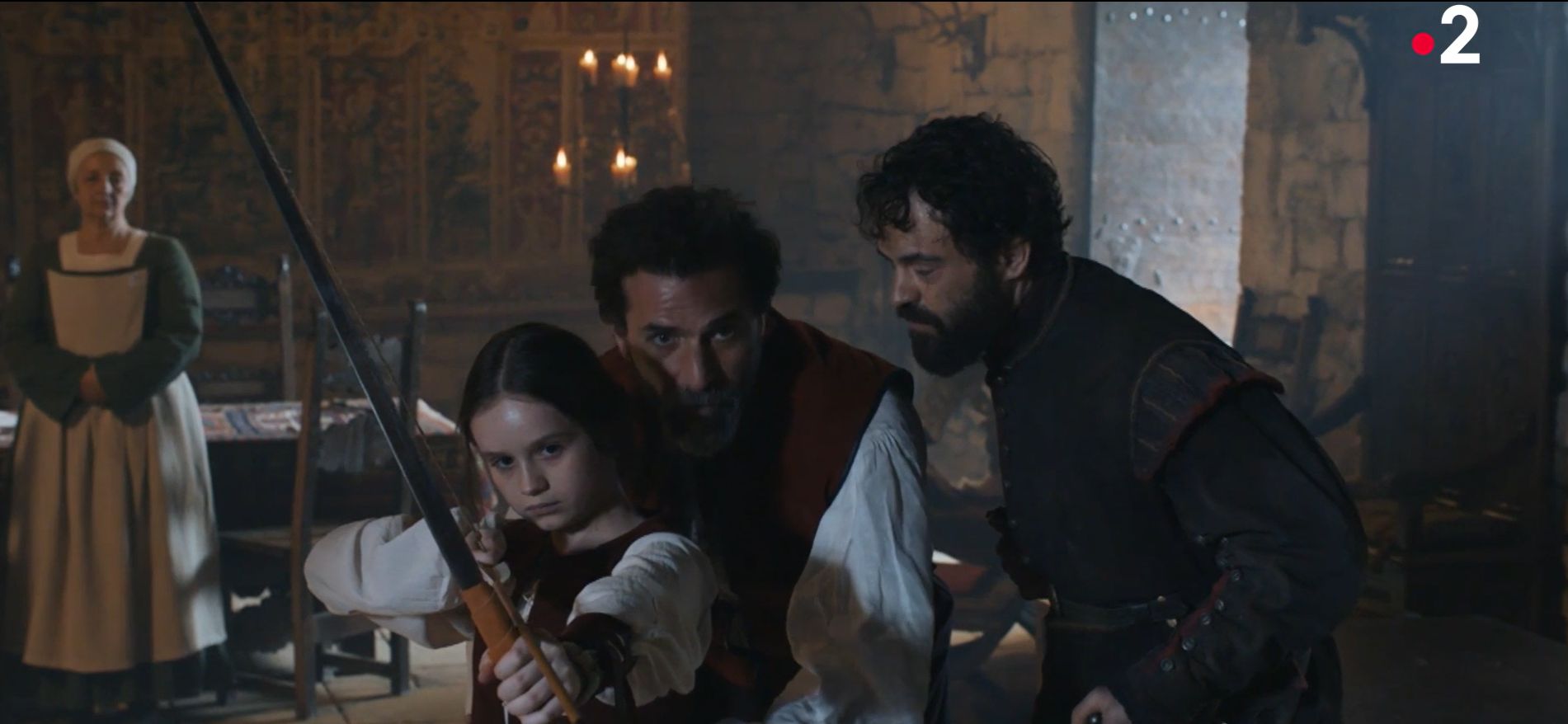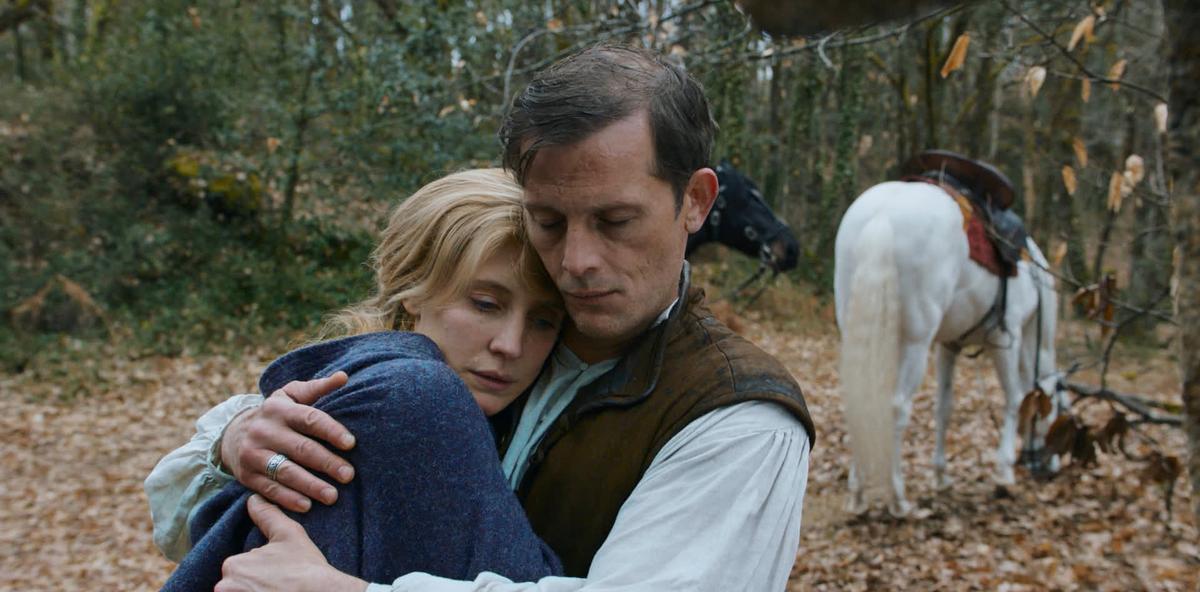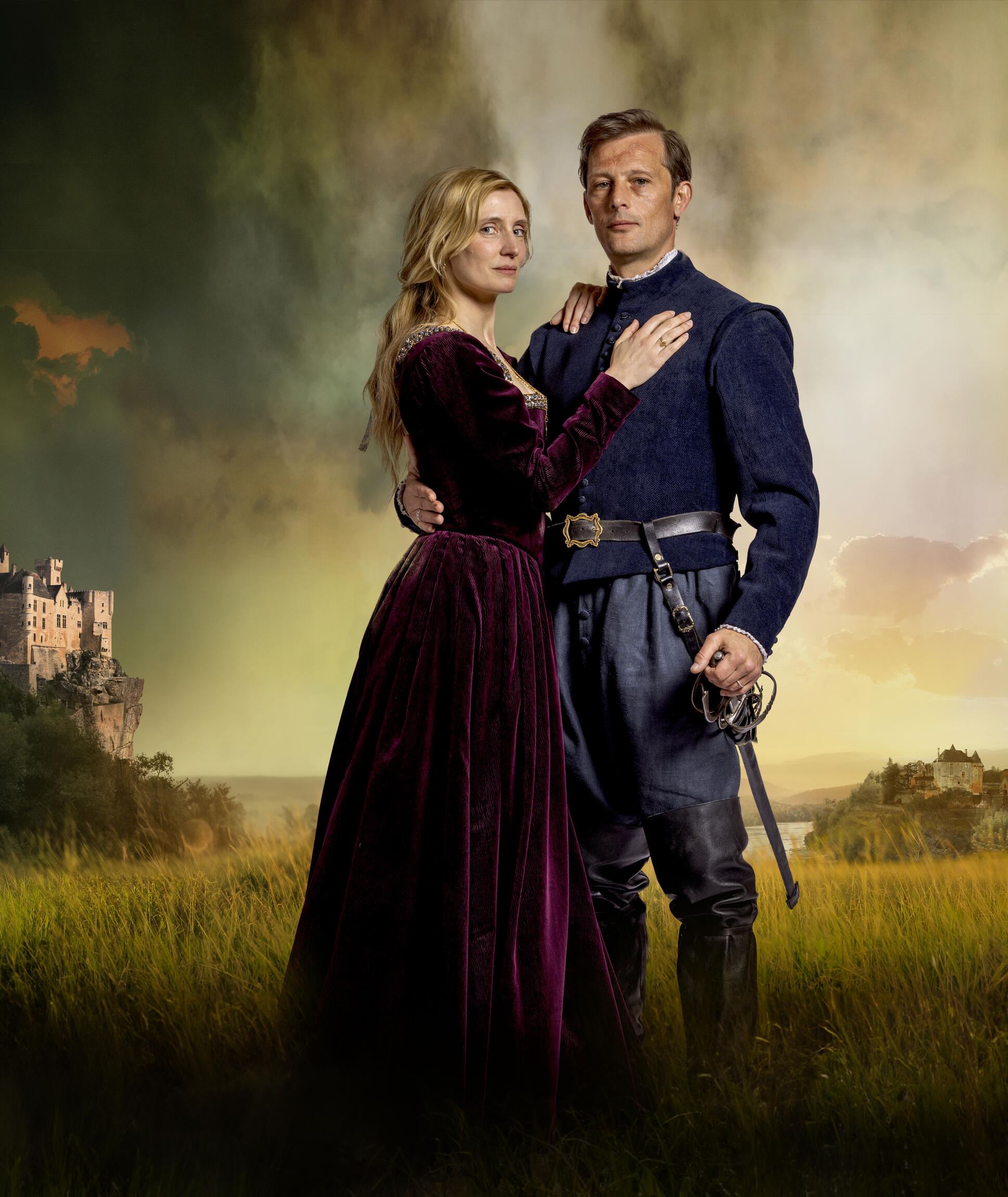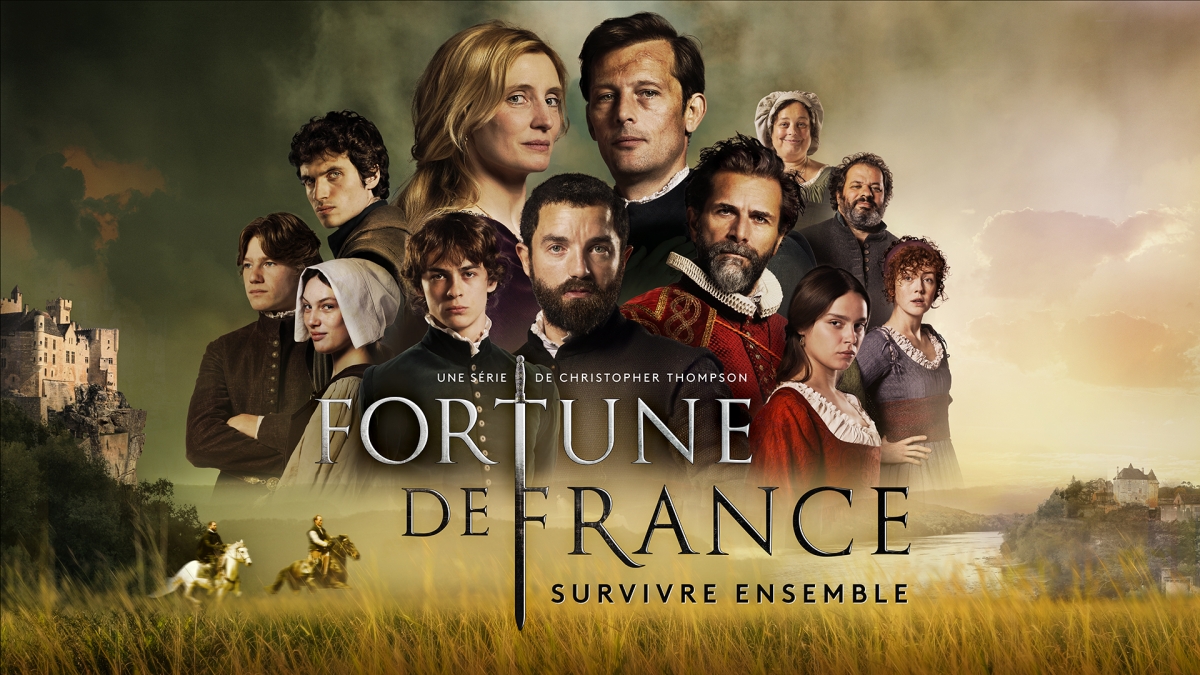Director Christopher Thomson naturally received these compliments with pride and joy. It must be said that he had dreamt of creating this series ever since he read Robert Merle’s thirteen novels composing the "Fortune de France" saga as a teenager.
An actor, screenwriter, and director, his experience in the film industry allowed him to assemble the perfect team to serve this personal and universal project. It was Thierry Bordes, head of the Périgord Film Office, who guided Christopher Thomson and Jean Cottin to make decisive location scouting trips in Périgord in the autumn of 2022. As the director explains:
"We discovered many of these sites that resonated in my imagination with everything I had envisioned while reading Robert Merle’s books. We built our story around these blocks: the Châteaux de Fénelon, Beynac, Bories, and Biron. We wanted to ground our actors in reality. That way, they could wear their costumes and live in their roles’ settings."
The director and producer, following these scouting trips, firmly defended their desire to work on natural sets.
""Moving a crew, feeding them, housing them is more expensive than working in a studio with a green screen***. That was the price to pay for this 16th-century story to truly come to life through the settings and characters." Indeed, it makes all the difference to be sitting by a grand castle fireplace to deliver your lines.
Both of them continued: "Our wish now is for this Franco-Périgourdine story to travel. The most intimate stories are the ones that appeal to the widest audience. By looking at the France of yesterday, we can speak about the France of today. There are indeed many parallels between these two eras: the plague epidemic and the Covid pandemic, Gutenberg’s revolution (printing) and the digital revolution (Internet), the ongoing struggle for women's emancipation today, and religious intolerance that is again tightening, leading people to kill each other in the name of God."
"Fortune de France" also invites us to question what is ambivalent in each of us. The Chevalier de Siorac, a doctor, humanist, and someone who seeks a scientific and reasoned approach, nevertheless imposes his Reformed religion on his family and servants, showing himself to be intolerant. The religious war thus transforms into a domestic war. Hell is truly paved with good intentions.
And if, to have peace, we stopped telling ourselves stories of origin?
To go further: Is the question of origin, deep down, a bad question? Discussion around the film *The Birth of Prehistory* by Sophie Cattoire.
https://www.tardiglobe.info/l-origine-existe-t-elle.html

*The Huguenots were the Protestants of the Kingdom of France and the Kingdom of Navarre during the Wars of Religion in the second half of the 16th century (1562-1598), during which they were in conflict with Catholics under this name.
**The Dordogne Filming Support Office is a service of the association Ciné Passion in Périgord, dedicated to cinema professionals. Its mission is to facilitate the arrival of film productions in the region by assisting them in their search for locations, and throughout all stages of the shoot, from preparation (technicians, actors, extras, service providers, etc.) to distribution, working closely with the production support fund of the Dordogne Departmental Council.
***The green screen studio principle involves filming an actor or a real object in front of a green backdrop, then using image processing software to replace the green screen with a virtual set or digital element.
Sophie Cattoire
Journalist, Senior Reporter
FERRASSIE TV








